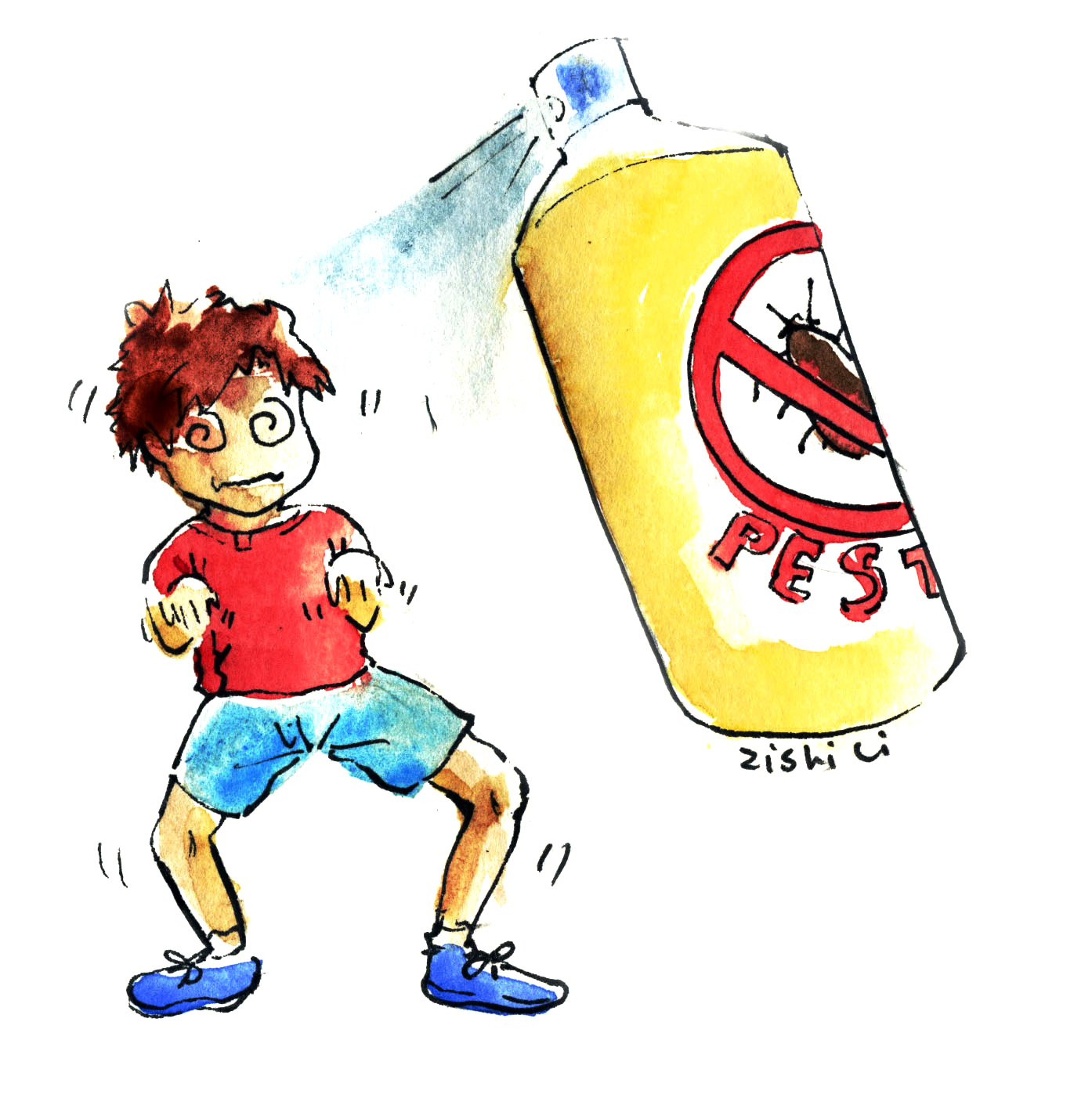
A new Yale study indicates that although pesticides successfully keep insects at bay, they may also have a negative impact on neurological development.
Research at the Yale School of Medicine has identified a link between prenatal exposure to a widely used agricultural pesticide, chlorpyrifos (CPF), and the presence of tremor — involuntary contraction or twitching of muscles — in childhood. The findings of this study contribute to the growing body of research suggesting that exposure to pesticides is associated with a host of neuro-developmental issues.
This study in particular, published in the journal Neurotoxicology on
Sept. 15, brings the motoric effects of pesticide exposure into focus.
Researchers tracked children with prenatal exposure to CPF from pregnancy through age 11, then tested for presence of tremor. The researchers said that the results pointed to an overarching need to reconsider the consumption of pesticides.
“This is perhaps one of the only examples in which we can show that in utero exposure to these pesticides leads to longterm health care consequences in the children,” Yale senior author and School of Medicine neurology professor Elan Louis MED ’89 said. “We’re talking about the possibility that fetuses exposed to pesticides through their mother, while they’re in utero, could have tremor eight or ten years later.” Louis found that most of the research regarding the neurological effects of pesticides was centered around cognition, as opposed to motor abilities. But when his colleague, Virginia Rauh, deputy director of the Columbia Center for Children’s Environmental Health at Columbia University, told him about a cohort study she was conducting to monitor the effects of CPF, Louis took the opportunity to investigate its influence on tremor, he said.
In 2001, the Environmental Protection Agency banned the residential use of CPF, which was prominent in urban areas at the time. However, the study participants — 263 minority mothers and their children, all from low income communities in New York City — were assembled in 1997, before the ban was imposed. In 1997, the initial measure of each child’s prenatal exposure to CPF was taken from umbilical cord blood. Then, at approximately age 11, the children were administered a short drawing test, which the researchers assessed for presence of tremor. Once all of the tests had been administered, the study concluded that children who had prenatal exposure to CPF were significantly more likely to show tremor.
Among experts who commented on Louis’ findings, as well as Louis himself, there was a general consensus that this study points toward a need for the agricultural industry — the main setting in which CPF is found today — to reconsider their use of pesticides.
“If you go to your grocery store and sample all of the fruits and vegetables in there, 25 percent of them will have some detectable traces of these [pesticides] still on them, and these are basically toxic. In terms of chemical warfare, they use these same [pesticides] in sarin gas, and we’re eating them, basically,” neurology professor at the School of Medicine Babar Khokhar said. “I think we need to take a look at the entire agricultural industry.”
For Caroline Tanner, neurology professor and Director of the Parkinson’s Institute at the University of California San Francisco Medical School, the study had implications for understanding the neurological effects of pesticides on adults, in addition to children.
“I hope [Louis] is able to continue following these children, because I think that it will be very important to find out what the long-term outcomes for them are,” she said.
According to Louis, his next step is to fully finish assessing the results of the study. In addition to taking drawing tests, the children participating in the study had MRI scans, which Louis and his colleagues plan to analyze for “structural or metabolic changes in certain brain regions,” to further investigate the brain damage caused by CPF.
But according to Khokhar, an alternate route for future research might be to examine the effects of pesticides like CPF in demographics other than minority, inner-city children.
“We know that socioeconomic differences between kids in the inner city and kids who maybe have other resources do affect their development,” Khokhar said.
“So, to [move forward] maybe take a look at children who are not inner-city, but who are brought up elsewhere.”
According to the Environmental Protection Agency, the usage of pesticides in the U.S. declined by 8 percent between 2000 and 2007.







